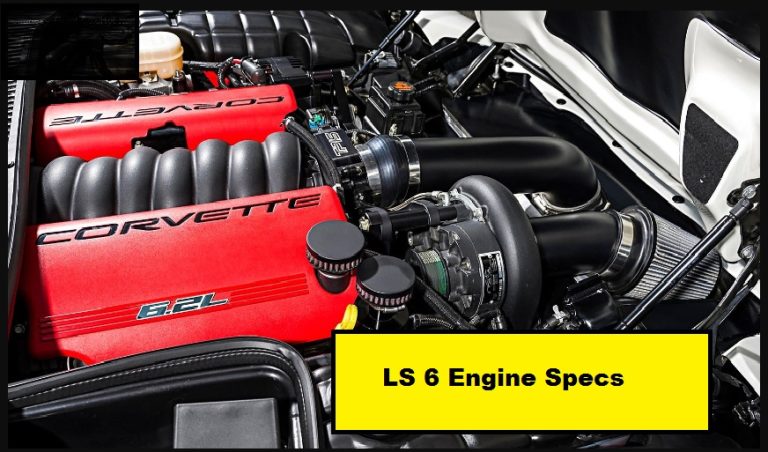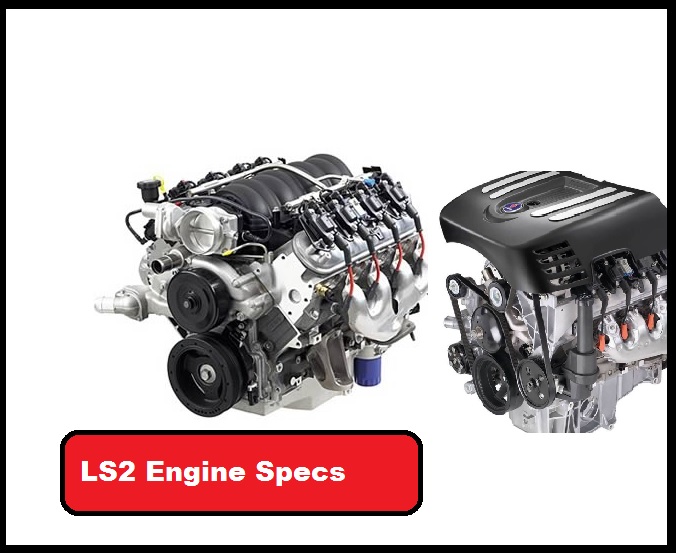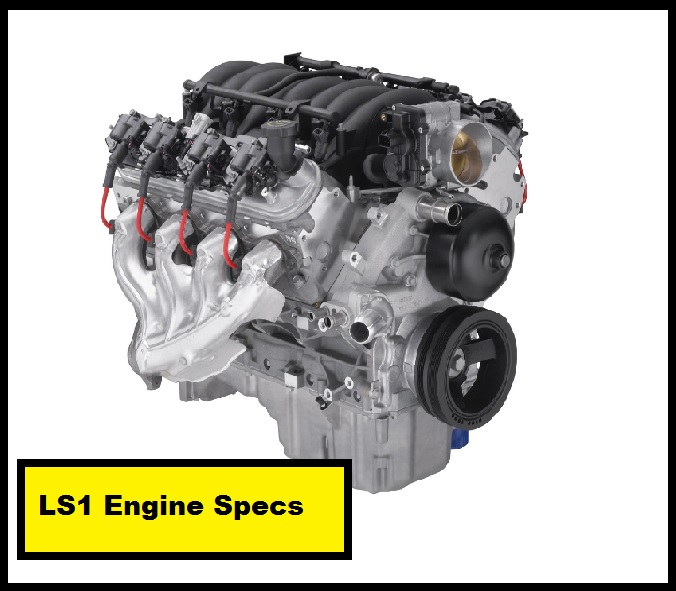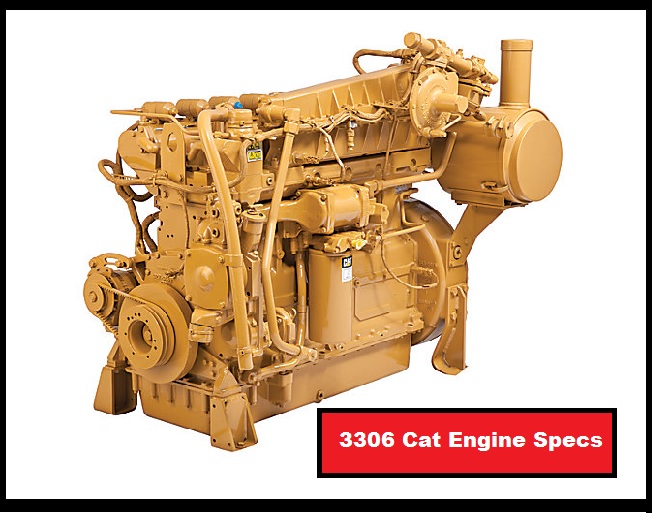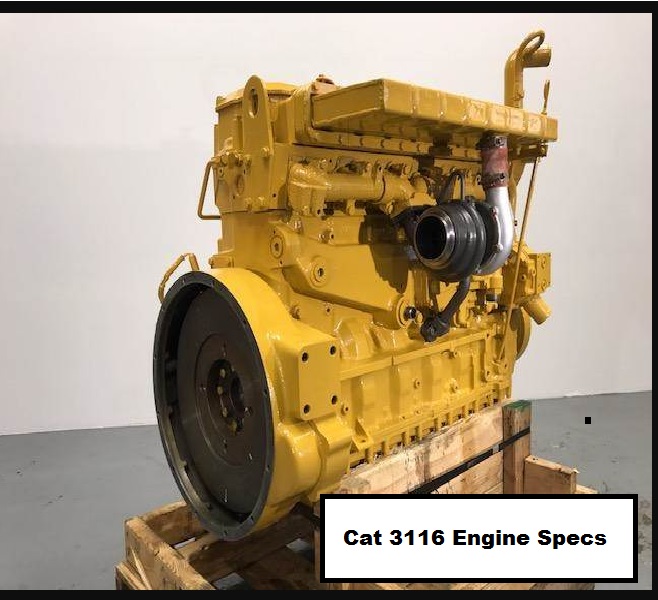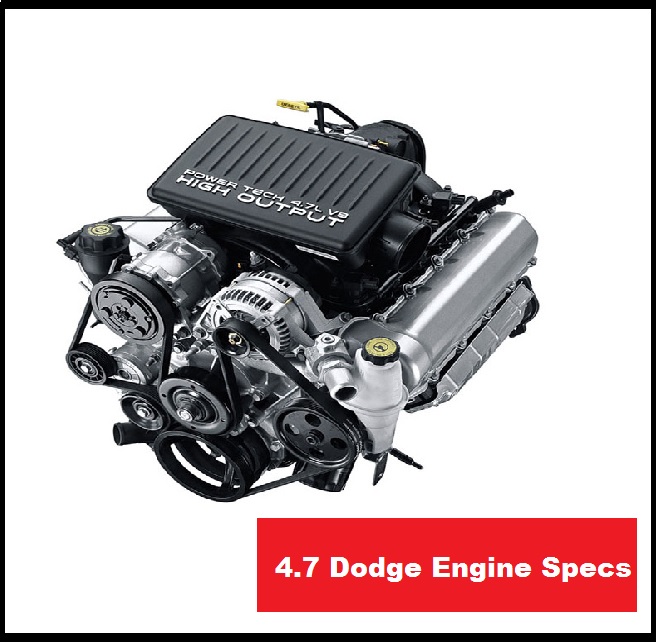3208 Cat Engine Specs
Here in this article, you will learn about the 3208 Cat Engine Specs, Performance, Bore & Stroke, Cylinder Heads, Cam Specs & More Let’s discuss the 3208 Cat Engine Specs, Valvetrain, performance, and Reviews.
The CAT 3208 is a V-8-cylinder diesel engine that runs on four strokes. It debuted on The market in 1975 through cooperation between Caterpillar And Ford to produce a diesel engine for heavy-duty trucks, tractor-trailers, garbage trucks, school buses construction equipment, and maritime applications.
Through the early 1990s and into the late 1990s, the CAT 3208 was a widely used diesel engine for vehicles And boats. The inadequacy of the engine to conform to international emissions requirements mandated by clean air regulations led to the end of production in 1999.
In addition to its general popularity, the engine’s consistent performance also contributed to its extensive adoption. As a result, many vehicles equipped with the CAT 3208 continued to operate long after production of the diesel engine was discontinued.
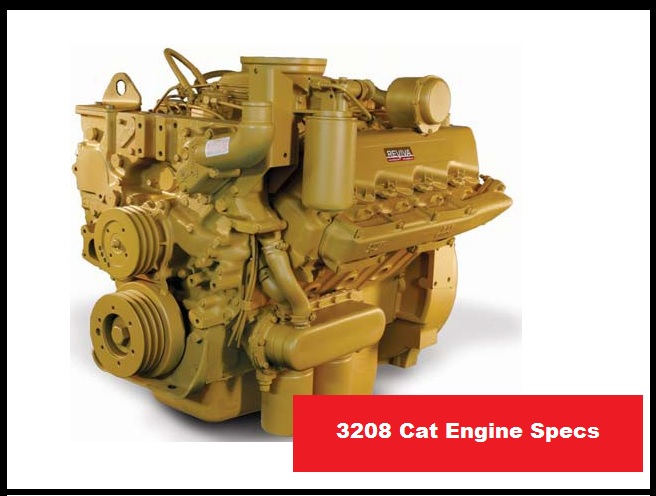
| Engine variations | Production Years | Horsepower |
| CAT 3208 diesel engine | Trucks: 1975 to 1993 Marine: 1975 to 1999 | Minimum: 200 hp @ 2000 RPM Maximum: 235 hp @ 2600 RPM |
| Engine variations | Normal conditions |
| CAT 3208 diesel engine (Truck version) | Oil capacity: 16 quarts Engine oil & air filter: 6,000 miles/6 months Fuel filter: 15,000 miles/6 months Engine coolant: 200,000 miles/24 months Transmission fluid & filter: 30,000 miles |
| Feature comparison | CAT 3208 diesel engine |
| Production years | 1975 to 1993 |
| Horsepower | Minimum: 200 hp @ 2000 RPM Maximum: 235 hp @ 2600 RPM |
| Torque | Minimum: 620 lb-ft @ 1440 RPM Maximum: 640 lb-ft @ 1400 RPM |
CAT 3208 – Transmissions
Transmissions by Allison with four gears were standard on many of the first CAT 3208 diesel engines.
Transmissions using Allison’s four-speed automatic AT545 were used with later diesel engine models.
The CAT 3208 engine has been used in a variety of applications, and as such, it can be paired with several different transmissions. Some of the most common compatible transmissions include:
- Allison AT540/545 series: These are automatic transmissions that are often found in medium-duty trucks and buses.
- Eaton Fuller Roadranger series: These are manual transmissions that are popular in heavy-duty trucks.
- Twin Disc transmissions: These are heavy-duty transmissions that are often used in marine applications.
It is important to consult the service manual for your specific engine application to determine which transmissions are compatible.
Troubleshooting CAT 3208 Transmission Problems
If you are experiencing problems with your CAT 3208 transmission, there are several things you can do to troubleshoot the issue. Here are a few tips:
- Check the transmission fluid level and condition. The transmission fluid should be at the correct level and should be clean and free of debris.
- Listen for any unusual noises. Grinding, whining, or clunking noises can all be indicative of transmission problems.
- Check for any warning lights. If your vehicle has a transmission warning light, it will illuminate if there is a problem with the transmission.
- Consult a qualified mechanic. If you are unable to troubleshoot the problem yourself, it is important to take your vehicle to a qualified mechanic for diagnosis and repair.
Replacing a CAT 3208 Transmission
Replacing a CAT 3208 transmission is a complex job that should only be attempted by a qualified mechanic. The process typically involves the following steps:
- Drain the transmission fluid.
- Disconnect the transmission from the engine and the driveshaft.
- Lower the transmission from the vehicle.
- Install the new transmission.
- Reconnect the transmission to the engine and the driveshaft.
- Fill the transmission with new fluid.
- Check for leaks and proper operation.
CAT 3208 Marine Transmission Rebuild Kit
Rebuild kits are available for CAT 3208 marine transmissions. These kits typically include all of the necessary gaskets, seals, and bearings to rebuild the transmission.
It is important to note that rebuilding a transmission is a complex job that should only be attempted by a qualified mechanic.
Diagnose CAT 3208 Transmission Slipping
There are several reasons why a CAT 3208 transmission might slip, including:
- Low transmission fluid level: If the transmission fluid level is low, the transmission will not be able to properly engage the gears.
- Dirty or burnt transmission fluid: Dirty or burnt transmission fluid can cause the transmission to slip.
- Worn clutch plates: The clutch plates are responsible for transferring power from the engine to the transmission. If they are worn, they will not be able to grip properly, which can cause the transmission to slip.
- Faulty torque converter: The torque converter is responsible for multiplying torque and smoothing out the power delivery from the engine. If it is faulty, it can cause the transmission to slip.
If you are experiencing transmission slippage, it is important to consult a qualified mechanic to diagnose the problem and determine the best course of action.
CAT 3208 Transmission Fluid Capacity
The transmission fluid capacity for a CAT 3208 engine will vary depending on the specific transmission model.
However, it is typically between 10 and 15 gallons. It is important to consult the service manual for your specific transmission to determine the correct fluid capacity.
Symptoms of a Bad CAT 3208 Transmission
Several symptoms can indicate a problem with your CAT 3208 transmission, including:
- Slipping: This is the most common symptom of a bad transmission. If your transmission is slipping, it will not be able to properly engage the gears, which will make it difficult to accelerate or maintain speed.
- Grinding noises: Grinding noises when shifting gears can indicate worn gears or other internal problems.
- Clunking noises: Clunking noises can indicate problems with the torque converter or other internal components.
- Difficulty shifting gears: If you are having difficulty shifting gears, it could be a sign of a problem with the clutch or the transmission itself.
- Leaks: Transmission leaks can indicate a problem with the seals or gaskets.
If you are experiencing any of these symptoms, it is important to consult a qualified mechanic to diagnose the problem and determine the best course of action.
Using a CAT 3116 or CAT 3216 for Towing
The CAT 3208 diesel engine’s maximum towing capacity is 7,500 pounds making it suitable for use in heavy-duty trucks.
Power and torque were increased in later engine variants to allow for more serious towing.
While the CAT 3208 marine diesel engine has fewer horsepower, some vessels have two of them for increased propulsion.
The Typical Service Interval of a CAT 3208 Diesel Engine
The maximum mileage before a major overhaul or repair is needed on a CAT 3208 diesel engine is 150,000 miles.
When compared to alternative diesel engines, such a lifespan is deemed low.
Due to the lack of cylinder liners and the extensive changes required in the aftermarket, the first versions were dubbed “throwaway engines” by mechanics.
Specifications for Servicing a CAT 3208 Engine
In demanding operating environments, such as prolonged idling, dusty surroundings, heavy hauling, or short journeys without reaching optimal temperature, proper maintenance and the use of high-quality fluids are crucial for the functioning of a CAT 3208 diesel engine.
Caterpillar 3208 engine for sale
Several online marketplaces list Caterpillar 3208 engines for sale
- Online marketplaces: These platforms often have a wide variety of sellers, including individuals and businesses.
- Engine parts suppliers: Some companies specialize in selling parts for specific engines, including the Caterpillar 3208. They may also sell complete engines. You can find these companies by searching online or contacting your local Caterpillar dealer.
- Manufacturer website: While Caterpillar may not directly sell used engines through their website, they may have a listing of authorized dealers who do. You can visit their website or contact them directly for more information.
Here are some additional things to keep in mind when searching for a Caterpillar 3208 engine:
- Price: The price of a Caterpillar 3208 engine will vary depending on its condition, age, and location.
- Condition: Be sure to ask about the condition of the engine before you purchase it. This includes the engine’s hours of operation, any repairs that have been done, and any known problems.
- Warranty: Some sellers may offer a warranty on the engine. Be sure to understand the terms of the warranty before you purchase the engine.
Caterpillar 3208 engine parts
The Caterpillar 3208 is a popular diesel engine used in a variety of applications, including industrial, marine, and agricultural equipment.
If you’re looking for parts for your Caterpillar 3208 engine, there are several options available online and through authorized dealers.
Here are some of the most common Caterpillar 3208 engine parts:
- Air filters: Air filters remove dirt and debris from the air that enters the engine. A clogged air filter can restrict airflow and reduce engine power.
- Fuel filters: Fuel filters remove dirt and contaminants from the fuel that is injected into the engine. Dirty fuel filters can cause engine problems such as reduced power, increased emissions, and premature wear on engine components.
- Oil filters: Oil filters remove dirt and contaminants from the engine oil. Dirty oil filters can lead to increased engine wear and tear.
- Cylinder heads: The cylinder head is the top part of the engine block and contains the valves, spark plugs (in gasoline engines), and injector nozzles (in diesel engines).
- Pistons: The pistons are the moving parts in the engine that compress the air-fuel mixture and transmit power to the crankshaft.
- Rings: The rings are the seals that fit around the pistons and help to prevent oil from leaking into the combustion chamber.
- Liners: The liners are the sleeves that the pistons ride in. They are replaceable, which means that you can rebuild the engine without having to replace the entire block.
- Crankshaft: The crankshaft is the rotating shaft that converts the reciprocating motion of the pistons into rotary motion.
- Connecting rods: The connecting rods connect the pistons to the crankshaft.
- Bearings: Bearings are used to reduce friction between moving parts in the engine.
- Gaskets: Gaskets are used to create a seal between different parts of the engine.
3208 Cat engine troubleshooting
Common 3208 Cat Engine Issues:
- Starting problems: This could be caused by a variety of factors, such as a dead battery, faulty starter motor, or problems with the fuel system.
- Loss of power: This could be caused by clogged air filters, dirty fuel filters, injector problems, or turbocharger issues.
- Excessive smoke: Black smoke can indicate incomplete combustion, which could be caused by a rich fuel mixture, faulty injectors, or worn turbocharger components. White smoke can indicate coolant burning, which could be caused by a blown head gasket or cracked cylinder head.
- Oil leaks: Leaks can occur from various engine components, such as the valve cover gasket, crankcase seal, or oil pan.
Basic Troubleshooting Steps:
- Consult the operator’s manual: This will provide specific information about your engine model and troubleshooting procedures.
- Perform a visual inspection: Look for any obvious signs of damage, such as leaks, loose connections, or broken parts.
- Check fluid levels: Ensure all engine fluids, including oil, coolant, and fuel, are at the proper levels.
- Clean filters: Replace or clean air filters and fuel filters according to the maintenance schedule.
- Check for error codes: Some models may have diagnostic codes that can provide clues about the problem. Consult the manual for instructions on how to retrieve and interpret these codes.
How to rebuild a Caterpillar 3208 engine
Rebuilding a Caterpillar 3208 engine is a complex and demanding task that requires specialized knowledge, tools, and equipment. It’s highly recommended to seek the assistance of a qualified diesel mechanic with experience working on Caterpillar engines.
However, if you’re still interested in understanding the process at a high level, here’s a general overview of the steps involved:
Preparation:
- Gather information: Obtain a workshop manual specific to your 3208 engine model. This manual will provide detailed instructions and specifications for the rebuild process.
- Assemble tools and equipment: You’ll need a variety of specialized tools and equipment for disassembly, cleaning, inspection, and reassembly. This may include engine stands, torque wrenches, micrometers, honing tools, and engine cleaning equipment.
- Source parts: Obtain necessary replacement parts based on the inspection and measurements taken during disassembly. This may include pistons, rings, bearings, gaskets, seals, and other engine components. Ensure you use high-quality parts recommended by Caterpillar or a reputable aftermarket supplier.
- Clean and prepare the workspace: Choose a clean and organized workspace with adequate ventilation and lighting.
Disassembly:
- Drain fluids: Drain engine oil, coolant, and any other fluids according to the manufacturer’s instructions.
- Disconnect and remove external components: This may include the intake manifold, exhaust manifold, turbocharger, starter motor, alternator, and other accessories.
- Remove the cylinder head: Carefully remove the cylinder head bolts following the proper sequence and torque specifications outlined in the manual. Lift the cylinder head off the engine block.
- Disassemble the bottom end: This involves removing the oil pan, crankshaft, connecting rods, pistons, and other components. Follow the specific instructions and torque specifications in the manual for each step.
Cleaning and Inspection:
- Clean all components thoroughly: Use appropriate cleaning solvents and degreasers to remove dirt, debris, and old gasket material.
- Inspect all components carefully: Look for signs of wear, damage, or cracks. Measure critical components like cylinder liners, piston rings, and crankshaft journals using micrometers to determine if they meet the manufacturer’s specifications and require replacement.
- Recondition salvageable components: Depending on the inspection results, some components like the crankshaft may be repairable through processes like grinding or honing. Refer to the manual and consult a qualified mechanic for guidance on reconditioning procedures.
Reassembly:
- Machine engine block surfaces if necessary: Depending on the inspection results, the engine block surface may require machining to ensure proper sealing and functionality. This is a critical step that should only be performed by a qualified machinist.
- Install new parts and reconditioned components: Carefully follow the workshop manual’s instructions and torque specifications for reassembly. Pay close attention to proper bearing clearances, ring gap measurements, and gasket placement.
- Reinstall external components: Mount the cylinder head, intake and exhaust manifolds, turbocharger, and other accessories according to the manual’s instructions.
- Fill fluids and perform initial start-up: After reassembly, fill the engine with new oil, coolant, and other fluids according to the manufacturer’s recommendations. Follow the proper break-in procedures outlined in the manual to ensure proper engine break-in and avoid damage.
3208 Cat Engine Specs Review
The Caterpillar 3208 engine is a V8 diesel engine that was produced from 1975 to 1993. It is a four-stroke engine with a displacement of 636 cubic inches (10.4 liters). The 3208 was available in a variety of horsepower ratings, ranging from 210 to 435 hp.
The 3208 engine is known for its durability and reliability. It is a popular choice for a variety of applications, including marine, industrial, and agricultural equipment.
- User reviews:
- Users mentioned that the CAT 3208 engine is very durable and can last a long time, especially at lower horsepower ratings and with proper maintenance.
- Some users reported issues with the engine at higher horsepower ratings, such as engine instability and shorter lifespans.
- Pros:
- Durable and reliable, especially at lower horsepower ratings
- Easy to maintain and repair
- Long lifespan with proper maintenance
- Cons:
- Can be unstable at higher horsepower ratings
- Difficult to rebuild due to non-removable cylinder liners
- Not fuel-efficient
For more details check out the video
3208 Cat Engine Specs FAQ

What does a 3208 Cat engine weight?
Sold Inventory Archive: 100 kW Caterpillar Diesel 3208, Unit 87841 AVAILABLE RIGHT NOW!▸ Storage Capacity: 150 gallons Approximately 5,500 pounds
What engine replaced the CAT 3208?
For those looking to upgrade from a Cat 3208, the C7.1 is a great option.
How long will a cat 3208 last?
Proper preparation is essential. I would estimate 12,000–15,000 hours of operation Before considering a rebuild if the engines have been well maintained as you claim.
Even if They only last for 10,000 hours, that’s still 25 years of use (assuming 200 hours per year of use).
Is a CAT 3208 a good motor?
The engine’s popularity stemmed from its consistent and efficient operation.
So many vehicles with the CAT 3208 diesel engine continued to chug along long after assembly lines closed.
Heavy-duty trucks could choose from three different horsepower ranges of the CAT 3208 diesel engine, which was manufactured for twenty years.
what is the horsepower of a 3208 Cat engine?
The horsepower of a Caterpillar 3208 engine can vary depending on its configuration and application. However, typical horsepower ratings for this engine range from around 210 to 375 horsepower.
what is the torque of a 3208 Cat engine?
The torque output can vary depending on the specific model and configuration, but generally, the torque output of a Caterpillar 3208 engine falls within the range of approximately 520 to 860 lb-ft (foot-pounds).
what is the displacement of a 3208 Cat engine?
The displacement of a Caterpillar 3208 engine is approximately 10.4 liters (636 cubic inches). This refers to the total volume swept by all the pistons within the cylinders during one complete cycle of all cylinders.
how much does a 3208 Cat engine weigh?
The weight of a Caterpillar 3208 engine also varies depending on its configuration and any additional components. However, a rough estimate for the weight of this engine is around 1,600 to 2,000 pounds (725 to 907 kilograms).
what are the dimensions of a 3208 Cat engine?
The dimensions of a Caterpillar 3208 engine can vary slightly depending on its specific configuration and any additional equipment attached. However, a typical approximation for the dimensions of this engine is around 46 inches (length) by 40 inches (width) by 38 inches (height).

